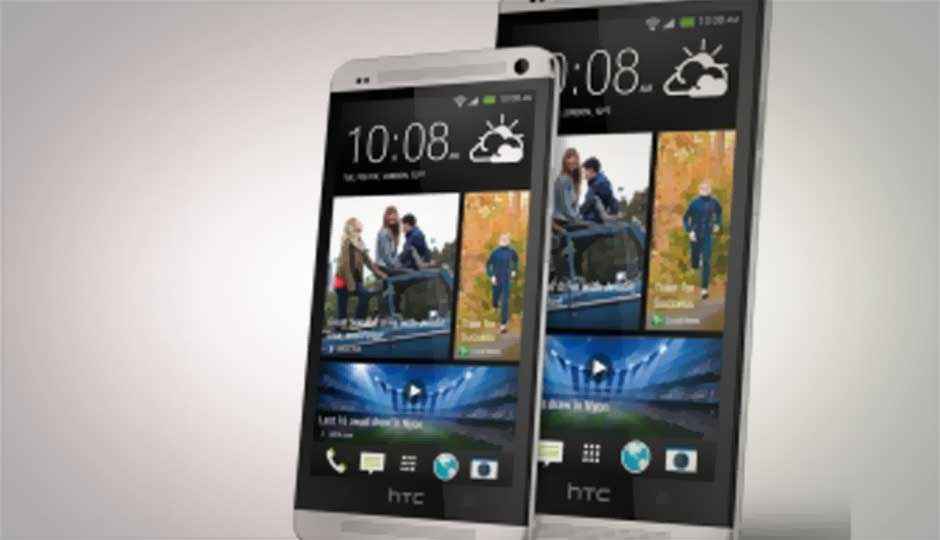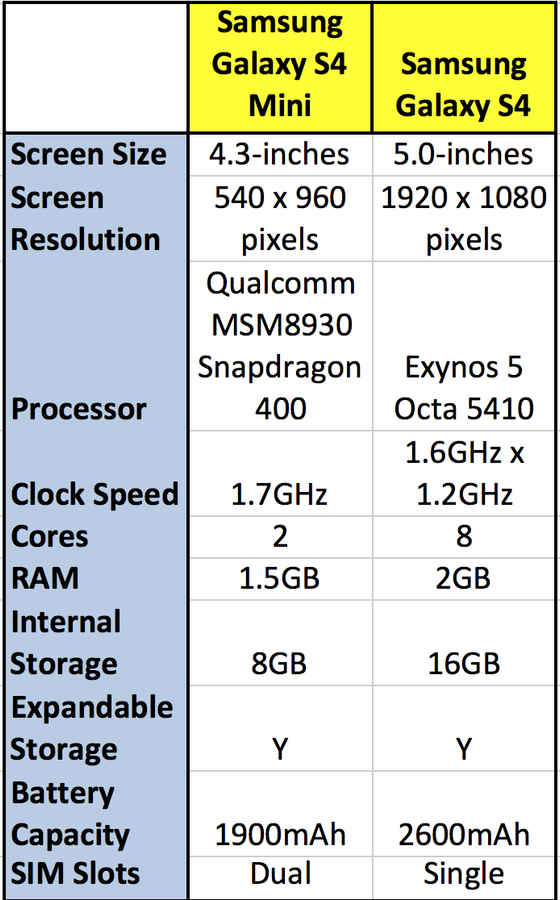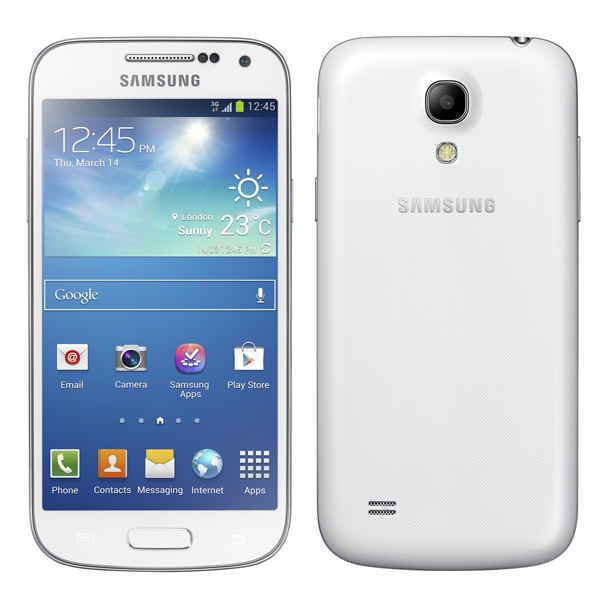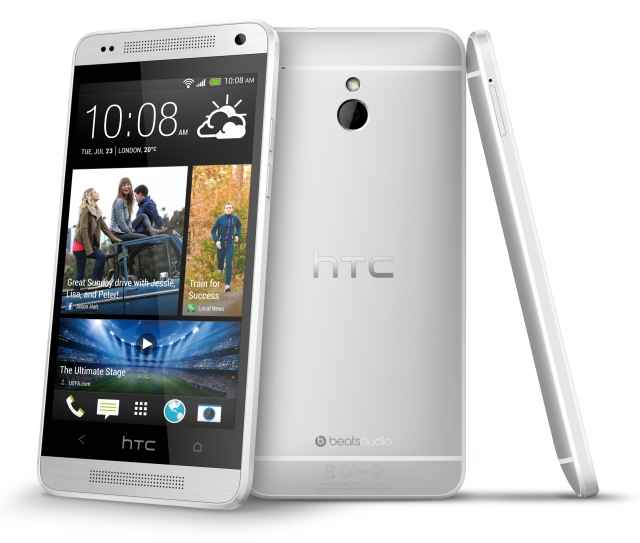Buyers Beware! ‘Mini’ versions of smartphones are nothing like the big guys
It is now a fashion to launch a stripped down version of the latest flagship smartphone, with the “Mini†or “Lite†monicker. We analyze if these phones are anything like the higher priced siblings. And, are they really worth spending your money on?

The Samsung Galaxy S4 Mini, the HTC One Mini, the LG G Pro Lite….all these are smaller screen or lower spec versions of the bigger flagship smartphones. But, that is just what the companies would want you to believe. At least with the name of the phone, they are trying to establish an instant relation with the more expensive version. However, this is anything but true. Through this feature story, we wish to dispel the perception (created mostly by the branding), that these are just the smaller screen smartphones, and may be pretty similar to the more expensive versions in other respects.
 Survey
SurveySamsung Galaxy S4 Mini vs. Samsung Galaxy S4
Market Price: Rs. 22,900 vs. Rs. 38,900
As the company’s branding team would want you to believe, the S4 Mini would just be a replica of the very popular Galaxy S4. Albeit with a smaller footprint, appealing to someone who wants a more compact screen size, but doesn’t want to compromise on power and performance. However, while the former is true, the latter isn’t.

As the table shows, the specs of the two phones are extremely different from each other. There is the octa-core processor replaced by a dual core, with lesser RAM and lesser internal storage. The 4.3-inch display has a fairly low resolution. Quite frankly, if this Mini version was supposed to be even a chip off the bigger block, this number would have been at least 1280 x 720 pixels, or thereabouts. The S4 Mini is priced at around Rs. 22,000, depending on the deal/scheme/offer you may find, but that does beg the question – is it the best smartphone in that price bracket? The answer is – absolutely not. For Rs. 1,500 more, you will get the far superior LG Nexus 4.
The moral of the story – do not fall for the “Galaxy S4” branding on the Mini, because that could just be to say that this also uses the same plastic as the bigger phone! And there are better phones you can buy, for a few quid more, unless the dual-SIM attraction has captivated you completely.
HTC One Mini vs. HTC One
Market Price: Rs. 32,500 vs. Rs. 41,000
Again, a spin off from the more expensive sibling. And again, apart from the looks, not much else is in the same league. But then again, the same build quality has trickled down, with the polished metal body on the One Mini making it look high-end. The build quality and the in-hand feel are nothing short of premium.
.png)
At least we can appreciate the fact that the 4.3-inch display has a 1280 x 720 pixel resolution, which may seem low compared to a full HD screen, but is still better than Samsung’s effort with the S4 Mini. The processor and RAM are not the same as the original HTC One, and while that doesn’t mean the One Mini will lag in performance, just don’t expect a Snapdragon 400 processor to be as good as the Snapdragon 600 quad core. Interestingly, the HTC One Dual SIM has the expandable memory option, but the One Mini doesn’t. Not sure if 16GB will suffice if the phone will be both your camera and music player.
While the HTC One Mini has specs which are closer to the phone it’s emulating, the price difference of only Rs. 10,000 sort of kills the deal. The alternatives could be the LG Nexus 4 (Rs. 24,000 approx) and the LG Optimus G (Rs. 27,000 approx), both with largely similar specs and considerably lower price tags.
LG G Pro Lite Dual vs. LG G Pro
Market Price: Rs. 18,500 vs. Rs. 34,000
For once, the immediate method of cost cutting isn’t the screen size. But the resulting product, albeit at a rather interesting price tag, is average at best. For a phone that is supposed to be following in the footsteps of the rather good Optimus G Pro, you would expect a bit more than average.
.png)
The Snapdragon 600 processor has been replaced with a MediaTek dual core chip, which, while good in its own right, isn’t going to be very fast. Yes, the display has been retained, but the resolution is incredibly low. Incredibly low, we say, because of the huge display. Good to know though, that the battery capacity has not been reduced.
Safe to say, unless you really want to carry around a massively stripped down big screen phone, there are better options to consider. Hugh Jackman tells us that the Micromax Canvas Turbo can do great things. Well, it certainly has a better chance than the LG G Pro Lite, with a more powerful MediaTek 6589T processor and very good build quality. Then, there is the Lenovo P780, which offers a massive 4000mAh battery and a better display resolution for the 5-inch screen. And if you are one of those people who feel safer buying product from a well known brand, the Sony Xperia C is also a very good option, with largely similar specs as the Micromax Canvas Turbo and the Lenovo P780.
The Bottomline: Its not all in the name
From the above three examples, we have pretty much established that the “Mini / Lite” versions of the more powerful smartphones are nothing like a chip off the old block. Instead, they are just very different phones. For all you know, these phones could be named completely differently, and no one would even suspect that they are following the more established predecessors. Hence, do not fall for this name game, and take a good hard look at the spec sheet and the alternatives, before making a final choice.
Is the future changing: The Z factor
Clearly, the current generation of Minis and Lites aren’t good enough. But, if the rumored specs of the Xperia Z1 Mini are to be believed, things could be changing. The Xperia Z1 Mini (or the Xperia Z1s) has a smaller 4.3-inch screen with a resolution of 1280 x 720 pixels. But, the rest of the specs remain similar to the Xperia Z1 – Qualcomm Snapdragon 800 quad-core chip (2.2GHz), Adreno 330 GPU and 2GB of RAM. If true, this would be the ideal smaller phone to follow a big screen flagship. Will be interesting to see how the pricing would be, but if priced well, this could be the perfect combination of usability and performance for those who don’t want to carry 5-inch screen size phones.
What the Mini should be like?
Now that we have established that the current generation of Mini smartphones aren’t the ideal devices to buy, we do have some opinion on what these phones should be like. The primary idea behind a Mini phone is to offer an alternative to a buyer who may not want a 5-inch or a 5.5-inch smartphone. For them, something with a 4.3-inch or 4.7-inch screen, but without changing anything else would be ideal. Retain the same powerful specifications, brilliant build quality, the water-resistance capability etc. – everything that the original flagship already has. Price it smartly, and with essentially two screen size versions of the same phone, smartphone makers will have a much bigger audience to capture.
If you have purchased a one of these smartphones, or was planning to buy one, you can share your views and questions directly with the author via Twitter.


.jpg)